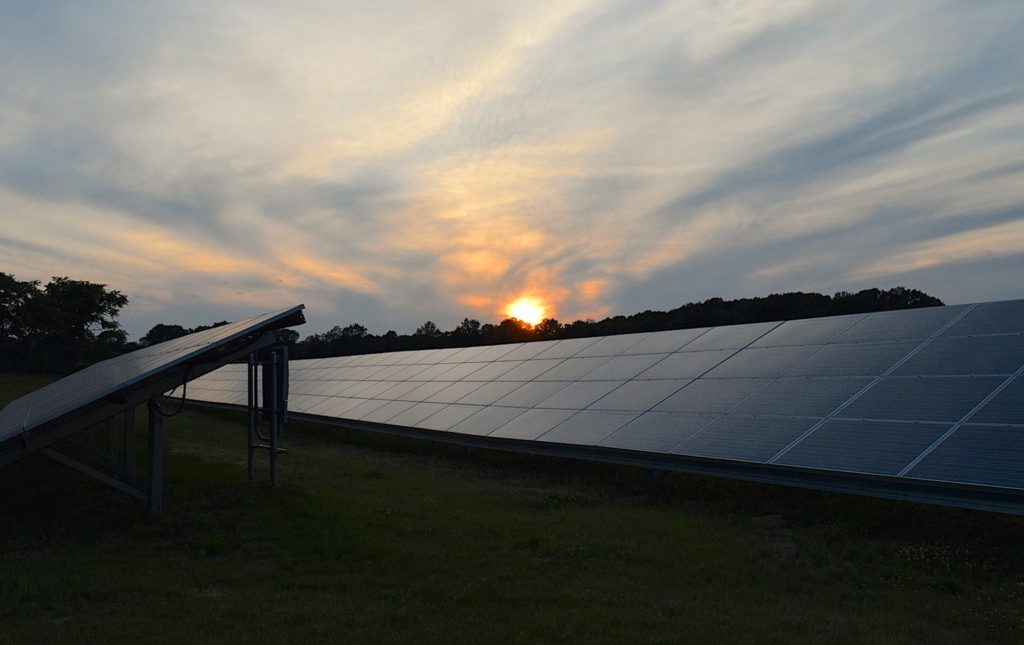
With continuous and growing interest in the applications and benefits of solar technology, the solar industry has been in a constant state of innovation over the past several years. This innovation has led to advancements in solar efficiency, solar energy storage, printable solar technology, solar design technology, and more.
“Going solar” is more convenient than ever before because programs like Community Solar support local solar energy production and because the technologies that make this possible have seen many advancements in recent years. While most of the United States energy grid still comes from fossil fuel energy sources (e.g., natural gas, coal, and petroleum) with their consequent carbon footprint and emissions, solar power becomes more and more accessible whenever solar technologies evolve and become more efficient.
Clearway Community Solar is committed to achieving a clean energy future by making solar accessible to more homeowners and believes that the more reliable and competitive solar options become, the closer we will get to achieving that goal. Our community solar farms and programs have come a long way over the years, now servicing 28 states with the capacity to power about 2.7 million homes. And we won’t stop there!
Let’s take a look at some of the latest advancements in solar technology that are paving the way forward for a brighter, cleaner future.
Solar Efficiency
The efficiency of solar cells has accelerated at a remarkable pace over the last decade. Solar efficiency is measured by the amount of sunlight (irradiation) that falls on the surface of a solar panel and is available for energy conversion. With the latest advances in photovoltaic module technology, the average conversion efficiency has increased from 15% to over 20%.
One factor that can lead to a loss of efficiency is the change in sun angle throughout the day as Earth rotates on its axis. Solar tracking systems, designed to tilt and position the panels towards the sun, first came around in the late 80s, but the technology had a long way to go. Today, a sun-tracking solar panel system with a single axis can see performance gains ranging from 25%-35%.
Solar Storage
Another limiting factor of solar energy is the fact that the sun’s light does not shine on solar panels at night, so for those hours of darkness, energy cannot be converted. In May 2016, Enel Green Power North America created a solar power generation plant that could produce electricity at night by storing energy collected from the sun during the day into a battery system.
Nighttime solar took a further leap when Stanford University researchers created solar panels that can generate electricity at night through a thermoelectric generator. Research conducted this year confirms that these nighttime cells produce enough energy to power a cell phone.
New Materials
The latest breakthrough in materials could move solar cell technology away from the current limitations of using traditional silicon. In 2016, researchers made the first solar cell with perovskite crystals, which can be up to 20% more efficient than silicon-based solar cells. However, silicon still outperformed perovskite-based cells in terms of viability for commercial use. In June 2022, researchers at Princeton University developed the first commercially viable perovskite solar cells, which can be manufactured at room temperature and require less energy to produce than silicon solar cells. The lower costs of production and improved sustainability applied to a utility-scale with a 30-year lifespan expectancy are exciting news for the next-generation solar energy industry. Perovskite cells are also more flexible and can be transparent, which expands the realm of possibilities for their application and usefulness.
Innovative Designs
There have also been interesting and exciting breakthroughs in solar design, such as printable solar cells, which are flexible, lightweight, and can be placed on a wide range of other materials. These solar cells can even be printed in smaller sizes and incorporated into electronic accessories such as phones, tablets, and laptops.
This year, the world saw the first ever production-ready solar-powered car. While electric cars have been around for quite a while, this is the first electric vehicle in production where solar panels have been added to recharge the car’s battery while it drives, adding about 44 miles per day to the already 388 miles the car ranges between battery charges.
Join the Solar Revolution Today!
Ready to harness the power of the sun and be a part of the clean energy future? Join Clearway Community Solar and take the first step towards a brighter, more sustainable tomorrow. Sign up now.
Frequently Asked Questions
What is solar efficiency, and why is it important?
Solar efficiency measures how effectively solar panels convert sunlight into electricity. It’s important because higher efficiency means more electricity can be generated from the same amount of sunlight, making solar power more cost-effective.
How do solar tracking systems work?
Solar tracking systems tilt and orient solar panels to follow the sun’s path throughout the day. This maximizes sunlight exposure, increasing energy production and efficiency.
What are perovskite solar cells, and why are they significant?
Perovskite solar cells are a type of solar cell made from perovskite crystal materials. They are significant because they offer higher efficiency and lower production costs compared to traditional silicon-based solar cells, paving the way for more affordable and sustainable solar energy.
Can solar panels generate electricity at night?
Yes, with advancements in energy storage and technologies like thermoelectric generators, it’s now possible for solar panels to generate electricity at night, reducing reliance on non-renewable energy sources.
Are solar-powered cars practical for everyday use?
Solar-powered cars are becoming more practical and efficient. They can add significant mileage to electric vehicle ranges, making them a promising option for sustainable transportation.
Got more questions? Contact us for answers and to learn more about the latest in solar technology.









